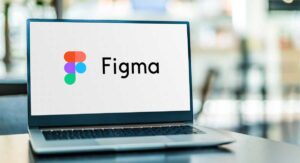Today, thousands of digital products and services are vying for our attention. Only through a great user experience can a brand be a differentiator in this intense marketplace. That’s why there’s a growing need for designers who can create intuitive and engaging user experiences.
As professionals who can blend creativity, technology, and psychology to craft intuitive and user-friendly digital experiences that delight users, UX/UI designers are highly sought-after across industries.
Because of this, the competition for UX UI jobs is fierce, and the interview process can be challenging. However, with the right preparation and understanding of the most common interview questions, you can significantly improve your chances of success.
In this guide, we’ll cover the most frequently asked UI UX interview questions, including those related to the UI UX Bootcamp, along with tips on how to answer them. We’ll discuss questions related to your experience, design process, problem-solving skills, and more. By the end of this guide, you’ll have a better understanding of what to expect in a UX UI interview and how to prepare for it, whether you’re considering the “UI UX Bootcamp” or not. So, let’s dive in and get started!
Popular Topics in UI and UX Design Interviews
Preparing for an interview is crucial to land your dream UX/UX designer job. While interviews may differ from company to company, being familiar with the types of UI UX interview questions that may be asked can help you better prepare.
Here are five categories of UI UX designer interview questions we’ll be discussing:
- General UX questions
- Career-related questions
- UX design process-related questions
- Product management and collaboration-related questions
- Skill and toolset-related questions.
Let’s explore each category in detail.
Also Read: The UX Design Process: Everything You Need to Know
General UX-Related Questions
During a UX interview, you can expect questions that help to assess your overall understanding of UX design and the principles that guide it. Here are some questions you might encounter:
What is UX design, and how do you define it?
UX design refers to the process of designing digital products or services that are user-centered and meet their needs. It encompasses all aspects of the user’s interaction with a product or service, including visual design, functionality, usability, and accessibility.
This question aims to test your knowledge of the fundamentals of UX design. In your answer, mention that UX design is the process of creating a product or service that is easy and enjoyable to use and solves a problem for the user.
What are the key principles of UX design?
When an interviewer asks about the key UX design principles, they want to know if you understand the fundamental principles that drive the UX design process. Some of the essential principles include usability, which means that the design should be easy to use and intuitive. Accessibility is another principle, which means the design should be available to everyone, regardless of their abilities. Simplicity is also crucial, and the design should be clear and straightforward. Lastly, empathy is a crucial principle, which means that the design should be focused on the user’s needs and create a positive experience for them.
How do you measure the success of a UX design?
This question is aimed at gauging your ability to analyze the effectiveness of your design choices. You can talk about how you would use metrics like user engagement, task completion rates, and customer feedback to evaluate the success of a design.
Pro Tip: To stand out from other candidates, it’s important not simply to regurgitate textbook definitions but to add your own unique perspective and personality to your answers. Don’t be afraid to take inspiration from articles or books, but demonstrate your creative thinking and problem-solving skills.
Career-Related Questions
During a UX interview, you can expect questions that help to assess your overall understanding of UX design as a career path. Here are some UX designer interview questions you might encounter:
What are the different career paths in UX design?
The interviewer may want to know whether you have done research on the different types of roles within UX design. Be sure to mention roles like UX researcher, interaction designer, visual designer, and UX writer.
How do you get started in UX design?
It’s common for interviewers to ask questions about your journey in UX design so far or how you plan to start. You can talk about how you gained relevant skills and knowledge through courses, internships, or self-learning. This is also a great opportunity to talk about any projects you’ve worked on.
What skills are necessary for a UX designer?
Through questions like these, interviewers often want to check if you’re familiar with the essential skills a UX designer should possess. But a deeper intention here is to know how many of those skills you possess and can talk about confidently. Therefore, don’t stop at just mentioning the necessary skills like user research, wireframing and prototyping, visual design, and collaboration. Go ahead and tell them what your strong suits are.
What are the job prospects in UX design?
The interviewer may want to know about the job market and opportunities for growth within the field. You can talk about the increasing demand for UX designers and the potential for career advancement through gaining experience and developing a diverse skill set.
Pro tip: During an interview, it’s important to demonstrate not only your knowledge and skills in UX design but also your passion and drive for the field. Be prepared to share your unique experiences and insights and show how they have shaped your approach to UX design.
Also Read: What’s the Difference Between UI and UX?
UX Design Process-Related Questions
This is one of the most important sections of the interview. Make sure you put in the work to ace the technical aspects of the interview.
In this section, you can expect questions that assess your understanding of the UX design process and the methodologies used to create successful designs. Here are some questions you might encounter:
What is the UX design process?
The UX design process is a series of steps that designers follow to create products that are user-friendly and meet user needs. It typically starts with user research to gain insights into user needs and behaviors.
The next stage is creating user personas that represent the target audience. Then comes the design phase, where designers create wireframes, mockups, and prototypes. The testing phase follows, where designers test their designs and gather user feedback. Finally, the implementation phase involves creating the final product based on the feedback received and iterating as necessary.
When asking this question, the interviewer may be testing the candidate’s understanding and knowledge of the different steps involved in the UX design process, including user research, user personas, wireframes and prototypes, testing, and iteration.
They may also be looking for the candidate’s ability to explain the importance of each step and how they fit together in the overall process. Additionally, the interviewer may be interested in the candidate’s experience implementing the UX design process in a practical setting.
What are the different stages of the UX design process?
The UX design process involves several stages that lead to a successful product. In an interview, the interviewer may ask you to outline these stages. Begin by describing the discovery phase, where you identify the problem and set goals.
Next, move on to the research phase, where you gather user insights and feedback. The design phase is where you use this information to create wireframes, prototypes, and visual designs. The testing phase comes next, where you get user feedback and iterate on the design. Finally, the implementation phase involves the launch and ongoing maintenance of the product.
What are some common methodologies used in UX design?
The interviewer might ask this question to determine how familiar you are with the different approaches used in UX design. Your response could include a discussion of popular methodologies such as Design Thinking, Lean UX, Agile, and Human-Centered Design. You might explain how each approach is used to guide the UX design process and their strengths and weaknesses. Demonstrating your understanding of various methodologies can showcase your adaptability and willingness to try different approaches to design challenges.
How do you conduct user research?
This question is aimed at assessing your ability to conduct user research effectively. Your answer should mention the different research methods, such as surveys, interviews, and usability testing, and how you would choose the appropriate method based on the research question.
Pro tip: When answering UX design process-related questions, try to provide specific examples from your past projects to demonstrate your understanding of each stage in the process. This will help showcase your practical experience and problem-solving skills to the interviewer.
Also Read: Essential UX Designer Interview Questions and Answers
Skill and Toolset-Related Questions
In addition to understanding the core principles and processes of UX design, it’s also important for UX designers to have a solid set of skills and tools to bring their designs to life. This section covers UI UX designer interview questions related to the necessary skills and tools for a successful career in UX design.
What are some essential skills for a UX designer?
When asked about essential skills for a UX designer, you should mention the required skills. But, it’s even more important to provide concrete examples of how you’ve applied these skills in your past work experiences to demonstrate your proficiency and expertise in these areas.
What tools do UX designers use?
In an interview, the interviewer may ask you about the tools you are familiar with as a UX designer. Your response should demonstrate your knowledge of the different software and tools used in the field. You can mention some popular tools such as Sketch, Figma, Adobe XD, InVision, Axure, and UsabilityHub.
You should also discuss your experience with collaboration and version control software. You can also highlight your proficiency with specific tools, including your ability to use them to create wireframes, prototypes, and design assets.
How do you stay up-to-date with the latest trends and technologies in UX design?
Employers want to see that you are constantly learning and adapting to changes in the industry. Talk about how you stay current by attending industry events, following thought leaders on social media, participating in online communities, reading relevant articles and books, and experimenting with new tools and techniques. Show that you have a growth mindset and are always honing your skills.
Pro tip: Besides answering the questions with specific examples and showcasing your knowledge and experience, don’t forget to communicate your passion for UX design and your eagerness to continue learning and growing in the field. Employers want to see that you are capable and enthusiastic about your work.
Product Management and Collaboration-Related Questions
In this section, you can expect to be asked about your understanding of the UX designer’s role in the product development process and your ability to collaborate effectively with other team members.
Here are some sample questions you might encounter:
What is the role of a UX designer in product management?
The role of a UX designer in product management involves designing and implementing user-centered strategies to create a seamless user experience. The UX designer collaborates with the product management team to identify user needs and align them with business objectives.
They also use their expertise to design and develop prototypes, conduct user research and usability testing, and ensure that the final product meets the user’s needs. The UX designer also plays a crucial role in gathering and analyzing user feedback to improve the product. A UX designer’s primary responsibility is to ensure that the product meets the user’s needs and provides a positive experience, ultimately leading to the product’s success.
The interviewer may ask you about your understanding of how UX design fits into the product development process and the specific responsibilities of a UX designer in a product management team.
How do you collaborate with other team members (e.g., developers and product managers)?
Collaboration is a critical skill for UX designers, and the interviewer may want to assess your ability to work with other team members. You can discuss how you communicate your design decisions and incorporate feedback from other team members, such as developers and product managers.
What are some common communication challenges in UX design?
Communication is essential in UX design but can also be challenging, especially when dealing with stakeholders with different priorities or backgrounds. The interviewer may ask you to describe some common communication challenges in UX design and how you have overcome them in the past. Be sure to mention things like communicating the value of UX design to stakeholders and managing expectations regarding design deliverables.
Pro tip: In addition to answering the specific UX designer interview questions, it is important to highlight your experience and approach to product management and collaboration. Share examples of successful collaboration with team members, including how you navigated conflicts or challenges. Emphasize your ability to listen actively and communicate effectively and how you prioritize user needs while aligning them with business goals.
Also Read: The Best UX Design Tools You Should Know
Tips to Succeed in UI and UX Interviews
Now that you have familiarized yourself with some common UI/UX interview questions and prepared your answers, it’s important to remember some general tips to ensure you have the best chances of succeeding in your interview.
Preparation Tips:
- Research the company and its products/services to understand its user base, design style, and design process.
- Review the job description and requirements, and prepare examples from your past experiences demonstrating your skills and abilities related to the role.
- Brush up on design fundamentals, such as color theory, typography, layout, and UX research and design methods.
- Create a portfolio that showcases your design process, problem-solving skills, and the impact of your work.
During the interview:
- Be ready to talk through your design process and the reasoning behind your design decisions. Provide context and describe how you arrived at the solution.
- Ask clarifying questions to understand the problem and requirements fully.
- Use specific examples from your portfolio to illustrate your skills and experience.
- Show your passion for design and willingness to learn and adapt to new challenges.
- Practice active listening and effective communication, and be open to feedback and critique.
Some additional tips to keep in mind:
- Be professional and courteous throughout the interview process.
- Dress appropriately and arrive on time or a few minutes early.
- Follow up with a thank-you note or email to express your gratitude for the opportunity.
- Be confident but humble, and don’t be afraid to ask questions or seek clarification if needed.
- Remember that the interview is a two-way street; it’s an opportunity for you to learn about the company and team culture.
Upskill & Ace Your UI UX Interview Questions
No matter your level of experience, one thing is certain: the world of UX design is constantly evolving, and staying up to date with the latest trends, tools, and best practices is crucial to success. We hope this comprehensive guide will help you answer some of the most common UI UX designer interview questions.
To succeed in UI/UX interviews, it is essential to have a thorough understanding of the design process, strong problem-solving skills, and a passion for design. Taking the right courses can help aspiring UI/UX designers build a strong foundation of knowledge and skills and earn a certification such as this UI/UX Bootcamp certification. The program covers all UI/UX design aspects, from user research to prototyping and job assistance. Plus, you get hands-on experience from doing capstone projects and networking with peers and experts in the field.
Are you ready to build a UI/UX design career and become a certified UI/UX professional in just five months? Enroll today!
You might also like to read:
Excellent UX Design Examples Every Designer Should See
UI UX Designer Job Description: What Do They Do?







